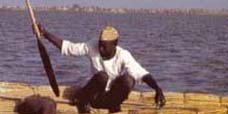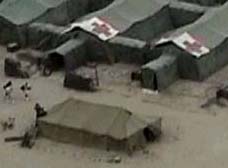2006.06.05: June 5, 2006: Headlines: COS - Ethiopia: Writing - Ethiopia: Sports: Golf: : An Interview with John Coyne
Peace Corps Online:
Directory:
Ethiopia:
Special Report: Ethiopia RPCV and Author/Editor John Coyne:
2006.05.10: May 10, 2006: Headlines: Figures: Writers: COS - Ethiopia: PCOL Exclusive: Meet Author John Coyne in Chicago June 5 :
2006.06.05: June 5, 2006: Headlines: COS - Ethiopia: Writing - Ethiopia: Sports: Golf: : An Interview with John Coyne
An Interview with John Coyne

"I did grow up on a small farm across from a golf course, as Jack did, so I have that knowledge which I used in creating the character. I was the youngest of six children, and we all grew up working at Midlothian Country Club, south of Chicago, Illinois. My sisters were waitresses in the dining hall or worked in the clubís office. My brothers and I were caddies. I was also the caddie master for several years, beginning when I was 16. So, I knew the caddie shack and pro shop life pretty well from working in them."
An Interview with John Coyne
Why did you write a novel that features Ben Hogan?
In the long history of professional golf, Ben Hogan is one of the most charismatic and enigmatic competitors to ever play the game. In his day - the late í30s, í40s and í50s - he was as famous as Tiger Woods is today. The late golf pro Dave Marr said that Ben Hogan was to golf what Fred Astaire was to dancing. He was the man by whom everyone else was measured. Hogan approached golf as if he were in competition with the game itself and not with other players in the tournament. It was always Hogan against the golf course.
And Hogan was more than a great golfer. He was in many ways an enigma in the golf world. Very little was known about him off the golf course. He did not grant many interviews; he did not seek out publicity. He played the game of golf when it was a true sport, and not just another part of the entertainment business. As he said at the time, he let his clubs do the talking.
Did you ever caddie for Ben Hogan?
No, I was not that fortunate. I never even saw the man in person. I grew up in the Midwest in the last years of his career, after his famous car accident, but as a caddie I knew, of course, who Hogan was and followed his career in the sports pages and the golfing magazines.
How much of the "Hogan material" in your book is true?
All of the stories in the book about what Hogan said, his career and how he conducted himself are true, or true to the best of my knowledge based on my research. I have had friends of Hogan read the book and theyíve confirmed that the tales are true. It is interesting to note that the influence of the man is still felt today and youíll find professional golfers, especially on the Champions Tour, still telling stories about Ben Hogan.
What do you think was so special about Hogan?
Well, F. Scott Fitzgerald has famously said that if you begin with an individual, before you know it youíve created a type. Begin with a type, and you find you have created - nothing. Hogan was an individual. A number of pros attempted to emulate him in manner and dress. Gardner Dickinson comes to mind. He copied Hogan in many ways, right down to the Hogan cap and the Hogan swing. Other players tried to swing like Hogan. Of course, no one could master his swing.
What I find so special about Hogan was his ability to hold himself apart from the scene. He was part of the action, a central part, but he was contained within himself. I think thatís the reason so many stories are still told about him. Golfers are still trying today to discover the secret of who he was. Jack Nicklaus said that Hogan was the best shotmaker the game has ever seen.
Hogan was considered a very intimidating player during those years, wasnít he?
Yes he was. Sam Snead had a great line where he said the only thing he feared on a golf course was a downhill putt, lightning, and Ben Hogan.
Snead wasnít the only one. Lloyd Mangrum said that Hogan was the only golfer in the world that he was scared of.
And even the great players from the era before Hogan were awed by him. Gene Sarazen said that Hogan was the most merciless of all the modern golfers, and Hogan played with the burning frigidity of dry ice. It is not surprising that when Hogan went over to Scotland to play in the 1953 British Open, he was quickly nicknamed the "Wee Ice Man."
Has Tiger Woods ever talked about Hogan?
I can recall one quote. Tiger said, "Ben Hogan won so many tournaments itís scary. He was incredible. He played at a level that not too many players could ever attain."
Do you have a favorite story about Hogan?
Yes, I do.
Ben Hogan was playing with a new pro who took great satisfaction in out-driving Ben off the tee. Hogan didnít mind because while the young pro was long, he always hit his drives in the wrong place to attack the pin. Well into the round, on a par 4, Hogan did out-drive the other pro, placing his ball on a flat spot in the fairway, 280 yards from the green. The young pro played first, and just managed to reach the green with his second shot, leaving a thirty foot putt. Ben played next and right after the impact, he said, "youíre away."
Hogan was right. He drove his fairway wood to within 4 feet of the cup, proving again that he was not only a great hitter, but he also knew how to manage himself around a golf course. And he also was able put this young pro in his place.
If you were writing a novel about Hogan, why did you include the love story between the assistant pro and the daughter of the club president?
I wanted to write about Hogan, tell a story about him, but I wanted to expand the narrative of the novel and have more of a story than just a golf match. The idea of a young kid going up against Hogan is a naturally dramatic situation and could play out in a number of ways. One idea led to another. And as most writers will tell you, characters tend to have a life of their own once they are imagined and committed to paper.
Also, I knew that my young pro needed a life beyond the golf course and that led to the romance. But it had to be a love story in the context of the time, and that allowed me to develop the setting and atmosphere and the culture of country club life in the summer after the war.
Finally, I wanted to make a larger point about how golf reflects life. Ben Hogan always said that he had discovered the secret of golf. That comment has resulted in numerous articles and books about his golf swing as players and writers try to define that "secret," but I flipped the question and had Hogan show that the secret of life comes from golf, and it is knowing that what matters in golf [and life] is always the next shot, the next step, that one has to keep moving forward in life. It is my attempt to be philosophical, to place the game of golf in a larger context than just a simple match between two players.
How close in personality are you, the author, to the narrator, Jack Handley?
Well, I was never as good a player as young Jack was when I was his age, nor was I as cocky and sure of myself as he was as a caddie. I think Jack and I, however, share a similar sense of humor, and the same intense love for the game, as well as our knowledge of golf.
I did grow up on a small farm across from a golf course, as Jack did, so I have that knowledge which I used in creating the character. I was the youngest of six children, and we all grew up working at Midlothian Country Club, south of Chicago, Illinois. My sisters were waitresses in the dining hall or worked in the clubís office. My brothers and I were caddies. I was also the caddie master for several years, beginning when I was 16. So, I knew the caddie shack and pro shop life pretty well from working in them.
My father never went to war. During World War II he worked the farm, and he was employed for almost thirty years at the steel mills in Indiana Harbor, Indiana.
Was there ever a PGA tournament called the Chicago Open?
Yes, in Chicago from 1937 to the early-forties there was a Chicago Open. In the í40s it was renamed because of the war. In 1942 it was called the Hale America Open and Hogan won it and always considered it to be his first "major" because the U. S. Open was not held that year but all the top golfers played in that tournament. Afterwards it was called the Chicago Victory National Open and Hogan won that tournament in 1947. All told, he won the Chicago Open three times, in í41, í42 and í47. I believe the last event was in 1948.
Why did you decide to have the central match of the tournament a practice round and not the Open itself?
I did that for a number of reasons, mostly so I would not have as the obvious final climax the last round of the tournament. I liked the idea of Hogan and Matt in single combat with Jack as the "go between." I wanted the match "off stage" so to speak. It appealed to the novelist in me.
Also I find, even as a golf fan, that an endless accounting in prose of a tournament does not work dramatically. Youíll see in golf movies how the director will speed ahead, compress and telescope 18 holes into a few dramatic moments.
So, while I needed to be true to an event like a 4-day golf tournament, I didnít want every hole and all the rounds of golf. The match between Hogan and Matt is just nine holes. I then focused on the back nine of Mattís opening round.
Who do you see as your readers?
Golfers obviously, but also anyone who loves a love story and likes sports. I tried to make the book both entertaining and informative. The reader should come away from the novel with a knowledge and appreciation of tournament golf and country club life, and with a sense of having been treated to a tense love affair that took place in the heat of summer in the Midwest in the nineteen forties.
How much research did you do? How many books did you read?
I have read all the books on or about Ben Hogan, and several dozen have been written. I have read the collections of stories and remembrances of Hogan, and I have interviewed players and friends who knew Hogan. I also did research in the archives of the United States Golf Association headquarters in Fair Hill, New Jersey.
How do you think Hogan would measure up against the pros of today?
Oh, he would do just fine if he was able to use the same clubs and golf balls, and also - and this is very important - be able to play on the same courses as todayís pros. Everything about golf has improved and changed since Hoganís day, and Hogan would have taken into todayís game his determination and his skills - and this is very important and key to his successful career - his determination to win.
Hogan was often written about as being cold and unfriendly. You show a warm and human side to the man. How much of that is true?
No doubt towards the end of his life Hogan was much more accessible to the public than he was during his playing days. Still, he was always shy and distant with strangers, and had only a few close friends. For example, when Hogan was in his last years of active competition, he built a ten-room mansion in Fort Worth that had only one bedroom. He wasnít inviting anyone to stay overnight. That was Hoganís way. However, in many of the books Iíve read, Hogan was always warm, friendly, and outgoing with children, so his attitude towards the caddie Jack, one of the central elements of the novel, is, I believe, very true to his personality.
How realistic is it that a young pro like Matt would by-pass the pro tour and settle for a club pro job in the 1940s?
Very realistic.
The majority of professional golfers in the í40s made their living by working private country clubs in the Midwest and Northeast during the summer months. In the winter they would take jobs at country clubs located in the south. There were just not that many PGA tournaments, nor enough prize money, available to play the game full time, unless you were a very special player like Hogan or Snead or Nelson. While Hogan eventually was able to get a job as "playing professional" representing a country club, he did work for a number of years at a country club in Texas, and at Century Country Club in Westchester, New York. But for the majority of PGA golfers, having a country club job - as it still is today - was the only way for them to earn a living from the game of golf.
Is there another story that youíd like to tell about Hogan?
Yes, there is a wonderful story told by Al Barkow in his book, Golfís Golden Grind: A History of the PGA Tour that sums up what Hogan was really like.
When Hogan was at the top of his game he met a driving-range pro at a tournament event and the man asked Hogan for some swing help. Hogan took one look at the playerís swing and told him to go back home to Chicago and get into the driving-range business or find a club job, and to give up trying to play the tour. Hogan also promised to help the young pro out in the future if he could. Well, the pro did what Hogan suggested and went back to Chicago and bought a small interest in a new public golf course. Several years later he called Hogan and asked him if he would dedicate the opening of his course by playing an exhibition. Hogan made the trip to Chicago and played eighteen holes, cutting ribbons on each tee of the new golf course. Hogan had made a promise to help the man and he kept his promise.
That was Ben Hogan. He never forgot who he was, where he had come from, or what he had given as his word.
Whatís your favorite Hogan quote?
"As you walk down the fairway of life, you must smell the roses, for you only get to play one round."
Hogan knew what it was all about, on and off the fairway.
What other books have you written?
FICTION
Brothers & Sisters [Dutton, 1986]
Horror:
The Legacy [Berkley, 1979]; The Piercing [G.P. Putnam's Sons, 1979]; The Searing [G.P. Putnam's Sons, 1980]; Hobgoblin [G.P. Putnam's Sons, 1981]; The Shroud [Berkley, 1983]; The Hunting Season [Macmillan, 1987]; Fury [Warner Books, 1989]; Child of Shadows [Warner Books, 1990]; plus numerous shorter pieces included in collections.
NON-FICTION
How-to:
Getting Skilled: A Guide to Private Trade and Technical Schools, with Tom Hebert [Dutton, 1972]; This Way Out: A Guide to Alternatives to Traditional College Education in the United States, Europe and the Third World, with Tom Hebert [Dutton, 1972]; By Hand: A Guide to Schools and Careers in Crafts, with Tom Hebert [Dutton, 1974]; Penland Book of Pottery [Bobbs-Merrill, 1975]; Penland Book of Jewelry Making [Bobbs-Merrill, 1975]; How to Make Upside-Down Dolls, with Jerry Miller [Bobbs-Merrill, 1977]
Golf (edited):
Better Golf [Follett, 1972]; New Golf For Women [Doubleday, 1973]; Playing with the Pros: Golf Instruction from the Senior Tour [Dutton, 1990]
Peace Corps (edited):
Going Up Country, Travel Essays by Peace Corps Writers [Scribner's, 1994]; Living on the Edge: Fiction by Peace Corps Writers [Curbstone Press, 1999]
Why did you abandon horror novels to write one about golf?
Well, it is true that most golfers have, from time to time, "a horrible round of golf," what is not clear is how a "horror writer" ends up writing a golf novel!
In the 1970s and í80s I wrote a series of horror novels (The Piercing, Hobgoblin, The Shroud, The Legacy) and others, several of which made best seller lists across the country. While golf courses were never a scene for my horror novels, golf really wasnít that far from my mind.
In fact, during those years one side of my brain was writing magazine articles about golf and editing golf instructional books (Better Golf, New Golf for Women, and Playing with the Pros). Also during those years I kept nurturing the idea of writing a golf novel. Golf has been a passion of mine since I was 12 years old and first began to caddie.
Through the years, Iíd seen best seller golf novels; Dan Jenkinsís Dead, Solid, Perfect about the pros on the PGA Tour; Steven Pressfieldís The Legend of Bagger Vance, a fictional account of a match between Bobby Jones and Walter Hagen, and dozens more, but none about the player who dominated my childhood years: Ben Hogan.
There are hundreds of stories about Ben Hogan. As a kid caddie Iíd listened to club members swapping tales of Hoganís intensity and mysterious ways of tournament play. And Hoganís photos were constantly on the sportís pages as he won one golf tournament after another.
Still, it wasnít until a few years ago, after Mark Frostís The Greatest Game Ever Played came out, and after those Little Red Books on golf instruction by Harvey Penick were published, that I decided to write a novel about golf myself. Perhaps it was Tiger Woods who finally made me do it. Everyone said Tiger would rewrite the record books, breaking all of Jack Nicklausís and Arnold Palmerís records. But what about Ben Hogan? Why had his name slipped off the list of golf legends?
Someone had to bring back to life my childhood hero, and I wanted to do it by making Hogan a character in a novel. And what a character this "Wee Ice Man."
Hogan was, as the cliché goes, right out of central casting. A poor Texas boy, slight of stature, without a high school education, he was raised by a single mother after his father committed suicide. Turning pro as a teenager, he failed three times to make it on the PGA tour, but in the 1940s he came roaring out of Texas to dominate professional golf. In 1946 he played in thirty-two events. He won thirteen times, finished second in six, and finished third in three. Among the tournaments he won was his first major - the PGA Championship - and if he had made some putts on the final holes, he might also have won The Masters and the U.S. Open. A year later he led the tour again, winning seven times, and in 1948 he added ten more victories, including his second PGA Championship and his first U.S. Open. Eight months later he nearly lost his life.
In the winter of 1949, after a terrible automobile accident on a Texas highway, Hogan was told he might never walk again, but he did walk again and, with extraordinary determination, managed to return to golf 19 months later to win the U.S. Open, a victory that even today is called one of sportís most inspiring performances.
Hogan would go on to win the Masters, another U.S.Open, and the British Open within a span of twelve weeks, and when he returned from Great Britain in 1953, he became the first golfer since Bobby Jones to get a ticker-tape parade down lower Broadway in New York.
A movie of his life called Follow the Sun was made with Glenn Ford playing Ben, though Hogan was his own stand-in when it came to making the famous golf shots.
So, in my small attempt to save Hogan from the dustbin of history - and fully engaging my golfing muses - I typed a title into my Dell laptop in 2003: The Caddie Who Knew Ben Hogan. This novel, I decided, would be about a kid caddie growing up after the war as much as it would be about the great Ben Hogan. Then I wrote an opening sentence: Memories are magic.
But this book would not be just pages of nostalgia for "the good old days."
As a novelist, I knew I had to engage readers who did not play golf and the only Hogan they knew was called Hulk. I wove into the narrative a love affair between the young assistant golf professional and the daughter of the country club president, using my fictional and exclusive club setting as a lens into the social fabric of Midwest society in the 1940s. With literary nods to John OíHara and J.P. Marquand, both writers of the í40s who used golf as a way to comment on the social stratification of the age, I let the love affair between the beautiful young woman and the golf professional be the focal point of class and society of the times.
I let my caddie tell his own story from the vantage point of forty years later when, now a retired university professor, he returns to the country club of his youth and recalls, for the assembled sons and daughters of the members he once knew, that time in America when life was simpler and heroes like Ben Hogan were truly great men, or so we wished to believe.
But life was not simple, nor were men finer in those long-ago days, as the narrator remembers, and that, with plenty of good golf in between, is the story I tell in The Caddie Who Knew Ben Hogan.
As a novelist, have I abandoned my "horror" roots? Iím not sure. In researching Ben Hoganís life, I came across a story told about Al Geiberger, a gentle, soft-spoken, golf professional, who once played with Hogan in the final years of Hoganís career. Asked what it was like to play with Hogan, all Geiberger could think of to say was "it was spooky."
When this story was posted in May 2006, this was on the front page of PCOL:





Peace Corps Online The Independent News Forum serving Returned Peace Corps Volunteers
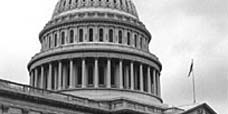 | Help Peace Corps get its full Appropriation
Senators DeWine, Feinstein, Santorum, and Durbin are asking their colleagues to join them in signing a letter to Senate Appropriations leaders to fully fund the President's FY07 request for the International Affairs Budget, including a full appropriation for the Peace Corps. Forty-five Senators have already signed on. Here's how you can help. Please make your call by May 16. |
 | The Peace Corps Library
The Peace Corps Library is now available online with over 40,000 index entries in 500 categories. Looking for a Returned Volunteer? Check our RPCV Directory. New: Sign up to receive PCOL Magazine, our free Monthly Magazine by email. Like to keep up with Peace Corps news as it happens? Sign up to recieve a daily summary of Peace Corps stories from around the world. |
 | PC evacuates East Timor, hopes to return
Volunteers serving in East Timor have safely left the country as a result of the recent civil unrest and government instability. Latest: The Peace Corps has informed us that they are monitoring the security situation on a daily basis and that it is the intention of the Peace Corps to return to East Timor if the security situation improves. |
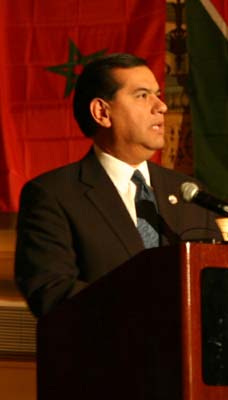 | It's Official: Vasquez nominated to FAO
Exactly one week ago we predicted that Director Vasquez would soon be receiving a major ambassadorship. Today the White House confirmed that Vasquez will be the new Representative to the United Nations Agencies for Food and Agriculture replacing Tony Hall.
PCOL Comment: Director Vasquez, let us be the first to thank you for your service to the Peace Corps, congratulate you on your new appointment, and wish you good luck in your future endeavors. Although we have had our differences over the years and we opposed your nomination in 2001, we think you are leaving a solid legacy of accomplishment and have served the Peace Corps well.
Initiatives and Accomplishments: Vasquez's major initiatives and accomplishments since becoming Peace Corps Director include: an agreement with Mexico in 2003 to host volunteers, sending RPCVs to work domestically in Hurricane relief after Katrina, emphasis on recruitment of minorities and of community college graduates, upgrading Peace Corps' infrastructure especially IT upgrades in the online application tracking process and the Volunteer Delivery System, an emphasis on safety and security of volunteers including the creation of a Situation Room at Peace Corps Headquarters, modifying Peace Corps' "Five Year Rule" for employment, and the expansion of the Peace Corps to its highest level in 30 years. He is the third longest serving Peace Corps Director after Loret Ruppe Miller and Sargent Shriver. |
 | Interview with a Hit Man
RPCV John Perkins says that for many years he was an "economic hit man" in the world of international finance whose primary job was to convince less developed countries to accept multibillion dollar loans for infrastructure projects that left the recipient countries wallowing in debt and highly vulnerable to outside political and commercial interests. In this exclusive interview for "Peace Corps Online," Colombia RPCV Joanne Roll, author of Remember with Honor, talks to Perkins about his Peace Corps service, his relation with the NSA, "colonization" in Ecuador, the consequences of his work, why he decided to speak out, and what his hopes are for change. |
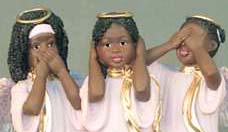 | Peace Corps stonewalls on FOIA request
The Ashland Daily Tidings reports that Peace Corps has blocked their request for information on the Volkart case. "After the Tidings requested information pertaining to why Volkart was denied the position ó on March 2 ó the newspaper received a letter from the Peace Corps FOIA officer stating the requested information was protected under an exemption of the act." The Dayton Daily News had similar problems with FOIA requests for their award winning series on Volunteer Safety and Security. |
 | PCOL readership increases 100%
Monthly readership on "Peace Corps Online" has increased in the past twelve months to 350,000 visitors - over eleven thousand every day - a 100% increase since this time last year. Thanks again, RPCVs and Friends of the Peace Corps, for making PCOL your source of information for the Peace Corps community. And thanks for supporting the Peace Corps Library and History of the Peace Corps. Stay tuned, the best is yet to come. |
 | History of the Peace Corps
PCOL is proud to announce that Phase One of the "History of the Peace Corps" is now available online. This installment includes over 5,000 pages of primary source documents from the archives of the Peace Corps including every issue of "Peace Corps News," "Peace Corps Times," "Peace Corps Volunteer," "Action Update," and every annual report of the Peace Corps to Congress since 1961. "Ask Not" is an ongoing project. Read how you can help. |
 | PC announces new program in Cambodia
Director Vasquez and Cambodia's Deputy Chief of Mission Meng Eang Nay announced a historic new partnership between the Peace Corps and the Kingdom of Cambodia that will bring volunteers to this Southeast Asian country for the first time. Under King Norodom Sihamoni and Prime Minister Hun Sen, Cambodia has welcomed new partnerships with the U.S. government and other U.S. organizations. |
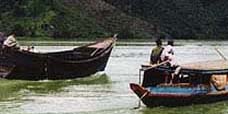 | Peace Corps suspends program in Bangladesh
Peace Corps Director Gaddi H. Vasquez announced the suspension of the Peace Corps program in Bangladesh on March 15. The safety and security of volunteers is the number one priority of the Peace Corps. Therefore, all Peace Corps volunteers serving in Bangladesh have safely left the country. More than 280 Peace Corps volunteers have served in Bangladesh since the program opened in November 1998. Latest: What other newspapers say. |
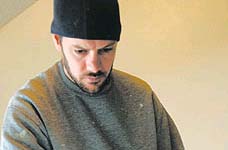 | Invitee re-assigned after inflammatory remarks
The Peace Corps has pulled the invitation to Derek Volkart to join the Morocco Training Program and offered him a position in the Pacific instead after officials read an article in which he stated that his decision to join the Peace Corps was in "response to our current fascist government." RPCV Lew Nash says that "If Derek Volkart spoke his mind as freely in Morocco about the Moroccan monarchy it could cause major problems for himself and other Peace Corps volunteers." Latest: Volkart reverses stance, takes new assignment in Paraguay. |
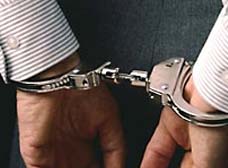 | RPCV admits to abuse while in Peace Corps
Timothy Ronald Obert has pleaded guilty to sexually abusing a minor in Costa Rica while serving there as a Peace Corps volunteer. "The Peace Corps has a zero tolerance policy for misconduct that violates the law or standards of conduct established by the Peace Corps," said Peace Corps Director Gaddi H. Vasquez. Could inadequate screening have been partly to blame? Mr. Obert's resume, which he had submitted to the Peace Corps in support of his application to become a Peace Corps Volunteer, showed that he had repeatedly sought and obtained positions working with underprivileged children. Read what RPCVs have to say about this case. |
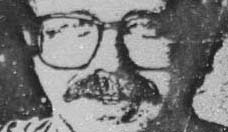 | Why blurring the lines puts PCVs in danger
When the National Call to Service legislation was amended to include Peace Corps in December of 2002, this country had not yet invaded Iraq and was not in prolonged military engagement in the Middle East, as it is now. Read the story of how one volunteer spent three years in captivity from 1976 to 1980 as the hostage of a insurrection group in Colombia in Joanne Marie Roll's op-ed on why this legislation may put soldier/PCVs in the same kind of danger. Latest: Read the ongoing dialog on the subject. |
Read the stories and leave your comments.

Some postings on Peace Corps Online are provided to the individual members of this group without permission of the copyright owner for the non-profit purposes of criticism, comment, education, scholarship, and research under the "Fair Use" provisions of U.S. Government copyright laws and they may not be distributed further without permission of the copyright owner. Peace Corps Online does not vouch for the accuracy of the content of the postings, which is the sole responsibility of the copyright holder.
Story Source:
This story has been posted in the following forums: : Headlines; COS - Ethiopia; Writing - Ethiopia; Sports; Golf
PCOL33068
03













